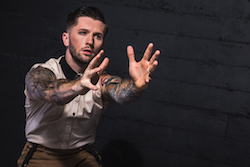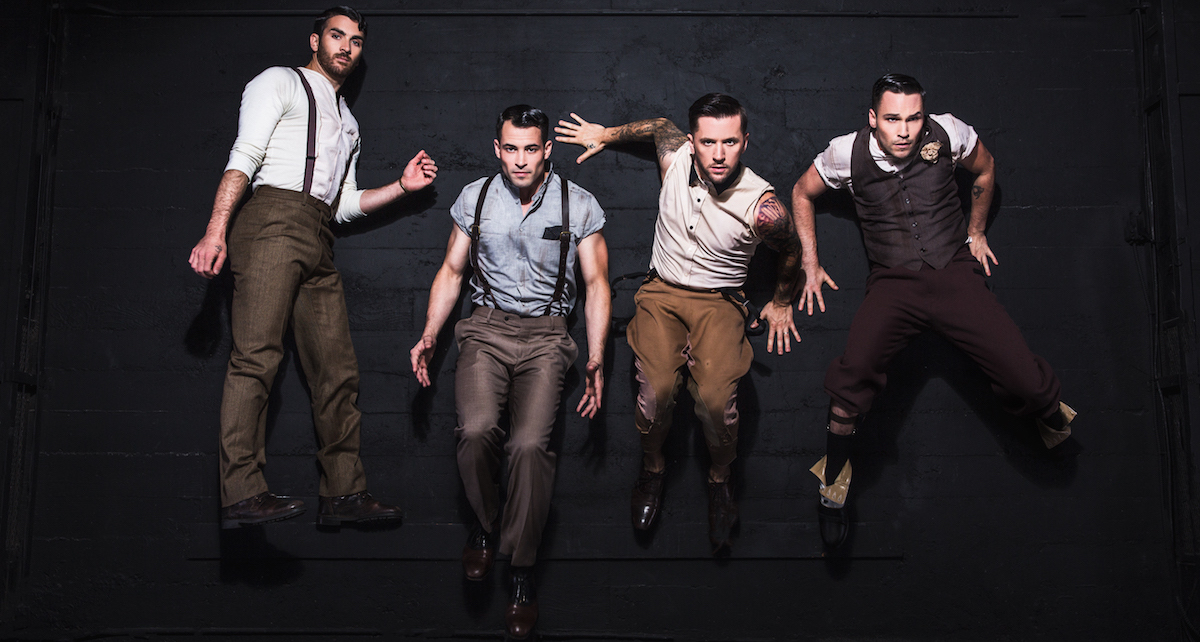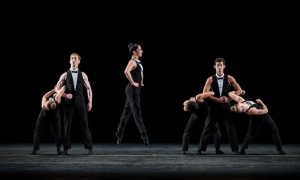In today’s dance world, certain important questions and uncertainties linger. What is “contemporary” – traditional modern dance, jazz, release technique/postmodern? If it’s a melange of them all, how is that shaping the dance artistry of the future? How will we incorporate elements such as narrative, music, pedestrian and technical movement? Delving into these considerations is Shaping Sound, a company under Artistic Director Travis Wall (So You Think You Can Dance Season 2 Runner-Up, Emmy Award-winning choreographer) and Co-Founders Nick Lazzarini (SYTYCD Season 1 Winner), Teddy Forance (Dancing With The Stars and SYTYCD) and Kyle Robinson (Lar Lubovich Company, Aszure Barton and Artists).

Travis Wall. Photo courtesy of Shaping Sound.
Perhaps not even intentionally, but by the thoughtful craft of their work, they’re pushing these questions forward in meaningful ways. Apart from that, they create dance art that is simply beautiful to behold. The company will soon tour the nation with After the Curtain, a tale in motion and music about loss, love and the perseverance of the creative spirit. Here, Dance Informa speaks with Wall to learn more about the show and the company.
Shaping Sound displays truly spellbinding dance artistry! One aspect that catches my eye in your work is the relationship between music and movement. That’s also alluded to in “Shaping Sound”. How would you describe the relationship between sound and movement in the Shaping Sound repertory?
“Thank you! Music is such an important part of all our repertory. As a company, we like to think of ourselves as visual musicians, which is how the name ‘Shaping Sound’ came about. We shape the sound we hear. When we are creating, we can actually see the music while we are dancing. Each dancer in this company has great musicality, and that only helps with the physical storytelling of the show.”
How does that tie into your artistic perspectives? How much of the music/movement unity in your work is purposeful, and how much intuitive? What might that look like in your creative process?
“For our past show, it was made up of individual songs by different artists, and the music was really all over the map. Our new show, After The Curtain, is very different. It is all music created by Ryan Lott of Son Lux. I have used his music on So You Think You Can Dance before and have always been really drawn to it. I reached out to him last year about collaborating and we had instant chemistry, and I knew he had to create all of the music for this new show. We are using some already existing songs; plus, he is re-imagining a handful of them and he is writing completely new original music just for us. It’s a dream to collaborate with another artist like this. Hearing why he wrote the songs helps us as dancers connect to each lyric. It has really changed the way I create as an artist; it’s helped me craft the storyline. I was moved to tears the first time I heard a song he re-imagined just for this show.”
Another aspect that called to me was frequent use of unison, interspersed with compelling solo and small group sections. With that, I reflected on the challenges of choreographing for larger groups — to keep it varied and multi-faceted but also clean and cohesive. In my view, the choreography and your dancers struck this balance extremely well. Can you speak to achieving that quality, and perhaps the process of coming to it?
“I would like to think that is the beauty of our company. Most of us have danced together for many, many years, so we feed off of each other, and dancing as a unit is effortless. This tour, we have invited new dancers to work with us. They are all very unique artists who move in very different ways. They bring a different perspective to the room. It’s important to highlight and showcase someone’s individuality but then also come together. Each dancer in this show plays a very specific character, so as we were casting we had to keep that in mind, while also thinking about how they would blend in with the rest of the company. I want each dancer to have their iconic moment, but when we are dancing together it should be like one flock of birds, singing the same song.”
Your company is also quite diverse. Diversity is a big topic in today’s dance world, and necessarily so. How might Shaping Sound be part of that conversation and a wider effort toward increasing diversity in dance?
“There are so many talented dancers to pick from, which always makes this very hard. Our dancers come from everywhere and have very different training backgrounds. It’s important to keep this diversity in the show. We have dancers from all over the country. Some of us have been on TV and commercials, some have graduated from Juilliard, some from Broadway and someone just out of high school.”
What’s next for Shaping Sound, and for you artistically? What are your goals and visions going forward?
“I still think Shaping Sound is just starting, which is exciting. This is our second show, and I have put everything I have into creating it. I have had to turn down other work as a choreographer to do this, but I believe in this company and this show that much. It’s incredibly fulfilling to be in the room creating this every day. I am hoping After The Curtain tours all over the U.S. and internationally. I think it’s important to say this show is unlike any other Shaping Sound show you might have seen before. We are excited for our fans to see new work, and we are excited to welcome new lovers of dance and arts to experience this!”
For tour dates and ticket information to Shaping Sound’s After the Curtain, visit www.shapingsoundco.com/tour.
By Kathryn Boland of Dance Informa.















